VIDEO/ARCHIVE
 DIVA Station, Slovenian Cinematheque, Argos DIVA Station, Slovenian Cinematheque, Argos
World Day for
 Audiovisual Heritage 2016 Audiovisual Heritage 2016
Kino-integral: video screenings and discussions
Thursday, October 27, 7pm and 9pm
Slovenian Cinematheque, Miklošičeva 28, Ljubljana

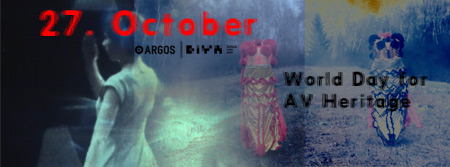
Physical and web archive of video and new media art DIVA Station each year marks the World Day for Audiovisual Heritage – 27th of October, pronounced for the first time in 2005 by UNESCO. Our goal is to emphasize the meaning of archives and audiovisual material as an important part of cultural heritage.
This year we are joined at the celebration by the Slovenian Cinematheque and centre for art and media Argos from Brussels. We dedicate this celebration to a dialogue between newer and older video creations and to connecting DIVA station with the Argos archive from Brussels.
We are inviting you to join us at the screenings on the Thursday of 27th of October from 7 pm at the Slovenian Cinematheque. We will present the new video programme Fresh Perspective (selection by Vesna Bukovec/DIVA station) and host Belgian video art (selection by Sofie Ruysseveldt, Andrea Cinel/Argos). At the screenings the curators will present the selected video works with Q&A at the very end.
Cover image composed of: Eric Pauwels, Violin Fase, 1986 and Katarina Rešek (Kukla), Napravi mi dete: Napoleon, 2016.
WORLD DAY FOR AUDIOVISUAL HERITAGE 2016
Creating physical and virtual, analogue and digital archives is a necessary tool to enable us a reflexion on contemporary art production. UNESCO has adopted 27 October as the World Day for Audiovisual Heritage better focus on the meaning of audio-visual materials and their carriers (film, video and sound footages, radio and television), and to provide an incentive to protect and maintain these documents which are an essential part of cultural heritage.
Audiovisual documents, such as films, radio and television programmes, audio and video recordings, contain the primary records of the 20th and 21st centuries.
Transcending language and cultural boundaries, appealing immediately to the eye and the ear, to the literate and illiterate, audiovisual documents have transformed society by becoming a permanent complement to the traditional written record.
However, they are extremely vulnerable and it is estimated that we have no more than 10 to 15 years to transfer audiovisual records to digital to prevent their loss. Much of the world's audiovisual heritage has already been irrevocably lost through neglect, destruction, decay and the lack of resources, skills, and structures, thus impoverishing the memory of mankind. Much more will be lost if stronger and concerted international action is not taken.
It was in this context, that the General Conference in 2005 approved the commemoration of a World Day for Audiovisual Heritage as a mechanism to raise general awareness of the need for urgent measures to be taken and to acknowledge the importance of audiovisual documents as an integral part of national identity.
DIVA STATION ARCHIVE PRESENTS: FRESH PERSPECTIVE

Curator: Vesna Bukovec (artist, curator, coworker of DIVA Station)
Artists: Ana Čigon, Pila Rusjan, Noemi Veberič Levovnik, Valerie Wolf Gang, Katarina Rešek (Kukla), Andrea Knezović, Ana Sluga, Yuliya Molina, Neža Jurman (Nez Pez), Urška Djukić, Nika Autor, Vesna Bukovec, RÁTNEEK (Maja Prelog, Blaž Murn)
Premiere: Slovenian Cinematheque/Kino-integral
Thursday, October 27, 7pm
DIVA Station is a physical and on-line archive of video art which is being developed since 2005 at SCCA – Ljubljana, Center for Contemporary Arts with the intent to research, document, present and archive video/media art in Slovenia.
The selection from the DIVA Station archive’s new acquisitions presents new production by younger authors. It focuses on technological and stylistic characteristics as well as shifts in contents and concepts in the production compared to older works from the archive. The program pursuits for different artistic approaches to the times of today and intentionally exposes women artists.
---
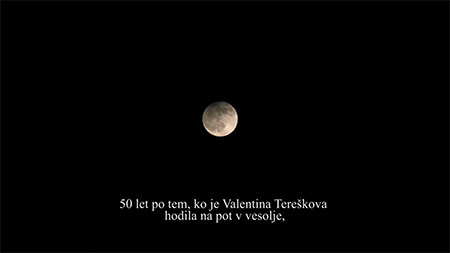
Ana Čigon, Za luno (Huston), 2015. Courtesy of the Artist.
Ana Čigon, Za luno (Huston)
2015, 1’10’’, colour, Slovene
On gender equality and the difficulties of space travel.
---
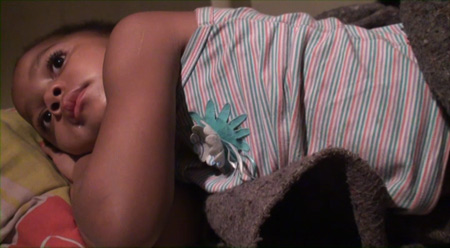
Pila Rusjan, Elisa, 5, 2010. Courtesy of the Artist.
Pila Rusjan, Elisa, 5
2010, 4’5’’, colour, Portuguese
Elisa, 5 is a video about the homeless population in São Paulo. It was filmed in the last days before 1000 people were thrown out on street from an occupied building, even though the building was empty for twelve years. This short video is about a girl, who ends up out on the street on her 5th birthday.
---
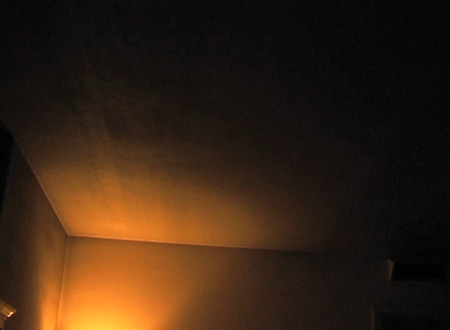
Noemi Veberič Levovnik, The Yellow Turn, 2011. Courtesy of the Artist.
Noemi Veberič Levovnik, The Yellow Turn
2011, 2’3’’, colour, English
Melancholic poetics in between nostalgia and discomfort. The upside-down view and the entrapment in space are accompanied by the original singing of the artist.
---
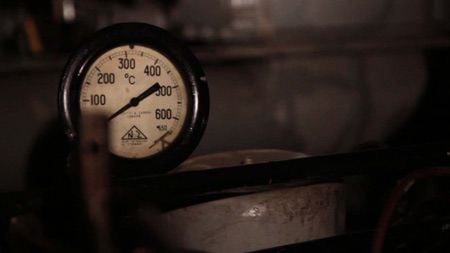 Valerie Wolf Gang, Distant Memory, 2014. Courtesy of the Artist.
Valerie Wolf Gang, Distant Memory, 2014. Courtesy of the Artist.
Valerie Wolf Gang, Distant Memory
2014, 2’43’’, English with Slovene subtitles
A video poetry that speaks about the times that once were. It all starts with a random event which evokes narrator’s memories about the times before the disintegration of Yugoslavia and encourages reflection about what the war actually brings about and how quickly people forget everything. The poem can be interpreted as a letter or a personal confession of an unknown man written for the Yougoslav President Tito’s mighty ship Galeb. The narrator in the video is artist Ulay.
---
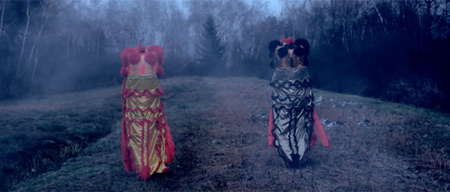
Katarina Rešek (Kukla), Napravi mi dete: Napoleon, 2016. Courtesy of the Artist.
Katarina Rešek (Kukla), Napravi mi dete: Napoleon
2016, 3’45’’, colour, English
A music video by a music group Napravi mi dete (Make me a child) tells a personal story of a young woman in search for love. The love is lost in a violent relationship which results in her having a violent relationship towards herself and consequently getting involved in even more similar relationships. The video touches the subject of sexual identity and ends up discovering that the world is and always will be male, if women will keep on seeing it through a male gaze.
---
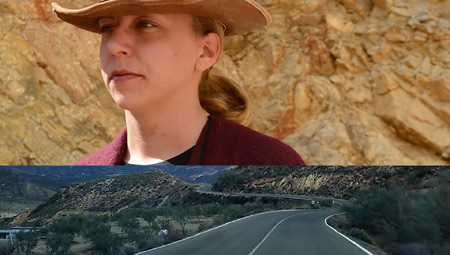
Andrea Knezović, Ode to Helplessness, The Inability to Breathe In 1.0, 2016. Courtesy of the Artist.
Andrea Knezović, Ode to Helplessness, The Inability to Breathe In 1.0
2016, 1’02’’, colour, sound
Video is a part of multichannel video installation tackling nonsense and powerlessness.
---
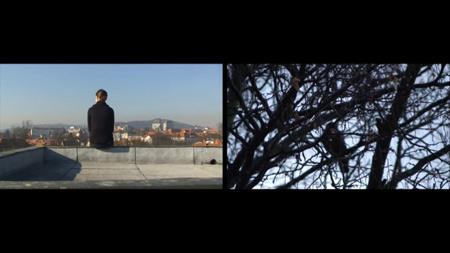
Ana Sluga, Somewhere Else, 2011. Courtesy of the Artist.
Ana Sluga, Somewhere Else
2011, 5’, colour, sound
Melancholic contemplation about yearning and leaving.
---

Yuliya Molina, Some-body, 2015. Courtesy of the Artist.
Yuliya Molina, Some-body
2015, 3’50’’, colour, Slovene
The video is shot in a stop-motion animation technique. The author playfully presents her diverse and creative life and the search of her own identity, which is anything but unambiguous. The subject of the video is already suggested in the title, which divides the word 'somebody' in two parts and opens up its meaning. Despite a specific life experience of the artist, a characteristic that defines younger generations that cannot define themselves and their work as unambiguous, can be recognized in her search of identity.
---
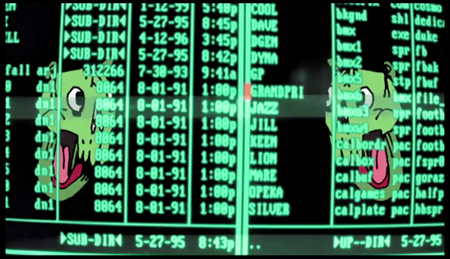
Neža Jurman (Nez Pez), Morph, 2016. Courtesy of the Artist.
Neža Jurman (Nez Pez), Morph
2016, 2’3’’, colour, sound
The video was made as a part of installation for the exhibition Morphoses. Its name derives from an English version of the Greek word morph (sound presentation of a morpheme, the smallest part of the word as a carrier of a meaning). In this principle the artist processed individual element of animation, as if dividing them into syllables, but without beforehand defining the goal in content. What came out is an eclectic ambient based on construction and layering. Individual illustrations are hand drawn and digitally edited, combined in a gif animation. The sound was added in postproduction. It is composed of a sample of song played backwards and of elements of humming, clapping and breathing.
---
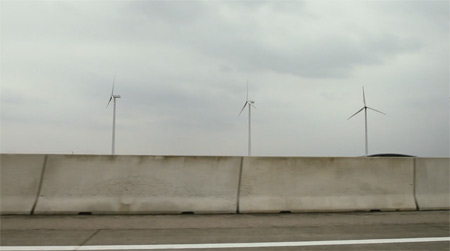
Urška Djukić, Persistence vol.2, 2014. Courtesy of the Artist.
Urška Djukić, Persistence vol.2
2014, 1’22”, colour, sound
Experimental video is a fragment of the series Persistence. Designed as a video painting in one sequence shot it initiates the question of persistence of man and nature in everlastingly exchange of power.
---
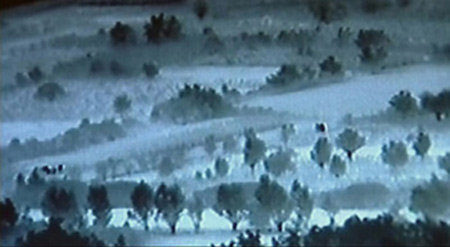
Nika Autor, Postcards, 2010. Courtesy of the Artist.
Nika Autor, Postcards
2010, 8’58’’, colour, sound
Postcards is the first part of the film diptych Postcards and Report on the situation of asylum seekers in Republic of Slovenia, January 2008 – August 2009. The footage comes from the archive of Radio-Television Slovenia. It represents an archival collection documenting media reporting on migrants in the period 2001-2008. The artist is interested in the construction of representation of a migrant person created by the dominant discourse or the dominant institution in charge of production of images and opinions. The film is showing how images in themselves, through the way they are produced (shot and edited), add to the criminalization and victimization of the asylum seekers.
---
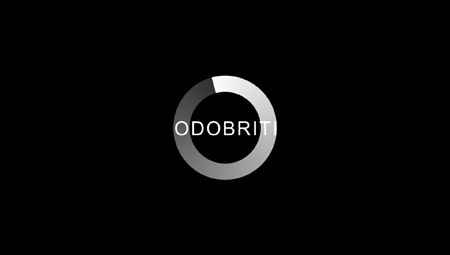
Vesna Bukovec, Okrožnica, 2016. Courtesy of the Artist.
Vesna Bukovec, Okrožnica (Circulation)
2016, 3’40’’, black and white, sound, Slovene
The video is a simple animation of a spinning circle commonly representing that certain processes are taking place in the background. The unpleasant feelings and mostly anger are frequent if the circle spins for too long. It symbolises slowness of bureaucratic procedures and powerlessness of those who wait, and also the passing of time and entrapment in a loop. The shape of the circle is the shape of the letter o. Inside the spinning circle seemingly coincidental words are written out. They are referring to life choices and situations of refugees, today's asylum seekers waiting for a solution of their requests for international protection. Will their endless circle of waiting ever stop spinning?
---
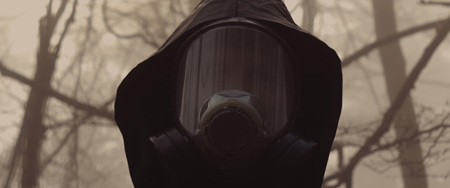
RÁTNEEK (Maja Prelog, Blaž Murn), 2 0 4 5, 2016. Courtesy of the Artists.
RÁTNEEK (Maja Prelog, Blaž Murn), 2 0 4 5
2016, 9’, colour, sound
"May 7th, 2045
I decided to return back home."
ARGOS ARCHIVE PRESENTS

Curators: Sofie Ruysseveldt (collection manager) and Andrea Cinel (curator & programme coordinator)
Artists: Jef Cornelis, Jacques-Louis Nyst, Eric Pauwels, Guillaume Bijl, Nicolas Provost, Wendy Morris, Sarah Vanagt, Meggy Rustamova, An van. Dienderen
Slovenian Cinematheque/Kino-integral
Thursday, October 27, 9pm
Since 1989 Argos is the Belgian leading institute for art film and video. Argos combines the function of an art centre with a fully-fledged collection program—which is absolutely unique. Today, Argos collection comprises circa 5.000 works. Argos covers the entire chain of development: production, archiving, preservation (analogue, digitised and digital-born), making accessible to the public, reflection and distribution. An extensive and varied activity program includes exhibitions, lectures and screenings, and guarantees a unique experience and a voyage of discovery with every visit.
The screening program highlights a selection of Belgian film and video productions created between 1969 and 2015. It presents the rich and original approaches of some of the most interesting Belgian artists and, at the same time, it gives an insight of the Argos collection.
With more than 200 television programs produced for Belgian television between 1964 and 1998, Jef Cornelis (1941) is the most prolific filmmaker in the Argos collection. Although he made films about modern art, architecture and the Flemish landscape, Cornelis’s work is primarily a dissection of television itself and it shows the controversial relation between television and the visual arts. Among the pioneers of Belgian video art, Jacques-Louis Nyst (1942–1996) produced a very consistent body of reflective, capricious, fantastic, poetic or purely theoretical video work. The concern of how art “functions” is always central and Nyst referred to his work as “rational art”: a confrontation between objects and their representations.
Violin Fase (1986) perfectly represents the beginning of Argos when the organization was founded to distribute the film and video works created at the intersection between film, performance and audiovisual art. Violin Fase is a solo in two movements: dance and camera. Eric Pauwels (1953) twirls the camera around the body of Anne Teresa de Keersmaeker (1960). He creates a new relationship between the camera and the dancer, but also between body and dance, dance and cinema.
From the older work, James Ensor in Oostende ca. 1920 (2000) is a fake “found footage montage” and investigates the truthfulness of the image. By taking everyday and common elements, namely a “found film reel”, and placing it in an unusual context, Guillaume Bijl (1946) forces the spectator to rethink his relation to reality and documents.
The most recent works in the program introduce other aspects. Works like Papillon d'amour (2003), Off the Record (2008) or Waiting for the Secret (2014) make use of different stylistic approaches such as the manipulation of found footage, the use of animation technique and the relation between the moving and photographic images. In other cases, for instance The Corridor (2010) and LILI (2015) or again Waiting for the Secret (2014), the artists build new narratives and propose new ways to undermine the boundaries between genres. Subtly political, these works investigate contemporary issues and they challenge our (audiovisual) heritage and recent history.
From early video and TV works through dance and found-footage films to video-essays, the program shows the hectic and richness of Belgian productions and the Argos collection.
---
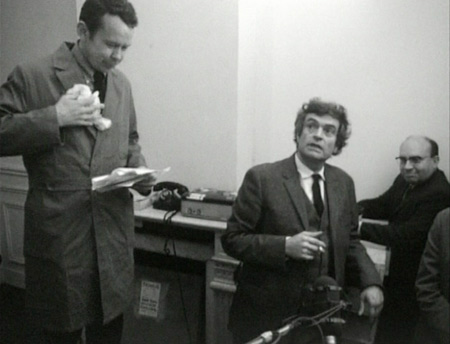
Jef Cornelis, Marcel Broodthaers: Musée d’art du XVIIe siècle, 1969.
Copyright VRT and Argos (Brussels).
Jef Cornelis, Marcel Broodthaers: Musée d’art du XVIIe siècle
1969, 4'58”, b&w, Dutch & French spoken, English subtitles.
Views of the 17th century “Eagles Department” in Antwerp: façade, wooden crates, postcards of 17th-century works on the walls and a small garden. Marcel Broodthaers is whitewashing the inscription “Département des Aigles” written on the fence in the garden. Part of the BRT (Belgian radio and television broadcast network) television series “Zoeklicht” (’Searchlight’).
---
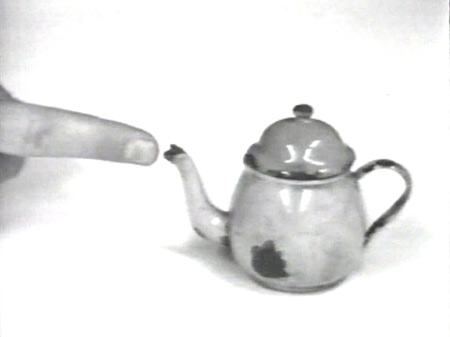
Jacques-Louis Nyst, L'objet, 1974. Courtesy of the Artist.
Jacques-Louis Nyst, L'objet
1974, 10'43”, b&w, French spoken, English subtitles.
The discovery of a child’s toy: a small blue metallic coffee pot, presents a complete enigma to an archaeologist of the future. The scientist no longer has any information at his disposal on Twentieth Century civilization. Patiently he attempts to unveil the significance of the object. His imagination, which distances itself from historic truth, progressively enters into a dream state, in which tenderness and fragility are the only reality.
---
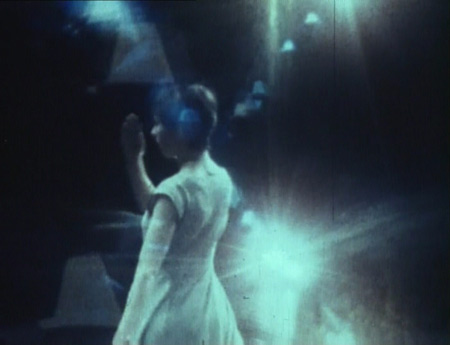
Eric Pauwels, Violin Fase, 1986. Courtesy of the Artist.
Eric Pauwels, Violin Fase
1986, 11'44”, colour, sound.
A solo in two movements; dance and camera. Eric Pauwels twirls the camera around the body of Anne Teresa de Keersmaeker. What we see is not the geometrical and minimalist choreographic structure, but a possessed woman, bathing in sweat, exploring the boundaries of physical exhaustion. A solo in two movements: the dance and the camera. Four uninterrupted takes. Pauwels is constantly looking for the essence, the soul of cinema. In its explicit presence the camera is also driven to its extreme, perspiration, hardship. Pauwels is not concerned with beautiful shots, but with the investigation.
---
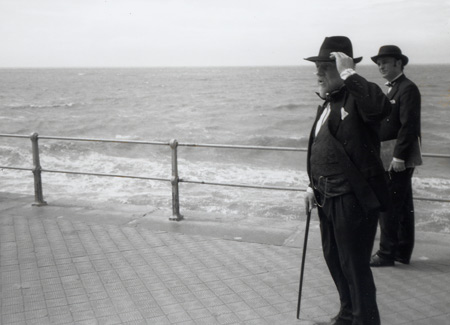
Guillaume Bijl, James Ensor in Oostende ca 1920, 2000. Courtesy of the Artist.
Guillaume Bijl, James Ensor in Oostende ca 1920
2000, 2'20”, b&w, silent.
The highly individual and visionary work of James Ensor (1860-1949), familiar for its masquerades, carnival scenes and grotesque caricatures, is not easily categorized under any modern genre. Ensor had close ties with Ostend, where he was born and continued to live, and it was the source of inspiration for many of his works. In 2000, which was “Ensor Year”, the installation artist Guillaume Bijl made a short fictitious found-footage film entitled James Ensor in Oostende ca. 1920, which shows the painter at this resort with his friends. We see them having a drink, strolling in the arcades of the Thermae Palace and sitting on the beach. Bijl’s meticulous choice of locations, belle époque dress (including bathing costumes) and his cinematographically perfect imitation of the rather jerky black & white images, as well as the patina and the perfectly imitated scratches on the film emulsion, all resulted in a perfect replica: an apparently forgotten roll of film from the days of silent film. Bijl himself classifies this faultless slice of life, one of his rare excursions into film and video, under ‘cultural tourism’, one of the elements of his work in which he popularizes cultural history subjects and reduces them to clichés for the general public.
---
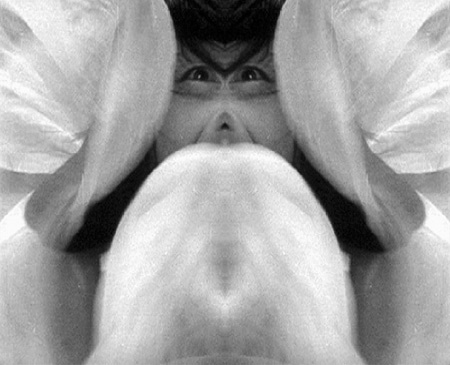
Nicolas Provost, Papillon d'amour, 2003. Courtesy of the Artist.
Nicolas Provost, Papillon d'amour
2003, 3'30”, colour, sound.
Papillon d’amour is based on key scenes from Akira Kurosawa’s classic Rashômon [1950], which are modified by a simple intervention: the insertion of a vertical axis of reflection through the image center. This central axis defines the focus of agency and, at the same time, the sphere of maximum turbulence on the image plane. It becomes an interstice perpetually engulfing and rebirthing images, producing figures in ongoing metamorphosis. Be it the step-by-step disembodiment of the female figure in Papillon d’amour, or the repeated submergence and re-emergence of the two antagonists in Bataille—the fold simultaneously promises protection and destruction, making the figures more and less than whole.
---
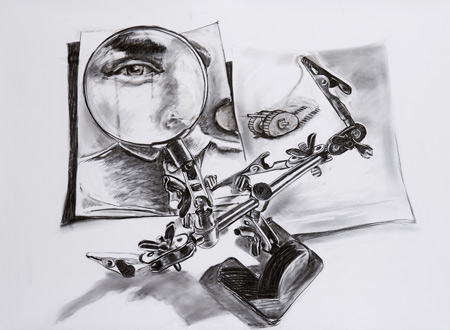
Wendy Morris, Off the Record, 2008.Courtesy of the Artist.
Wendy Morris, Off the Record
2008, 4'56”, colour, sound.
Off the Record explores the different experiences and treatment of black and white South African soldiers in Europe during World War I. Two documents form the basis of the film, a war diary kept by the artist’s great-uncle Walter Giddy, and a 1917 account by Sol Plaatje of the frustrated attempts of many black South Africans to play their part in the war effort – the title refers to the lack of official recognition for their contribution. Points of convergence between these disparate histories are created through the process of animation.
---
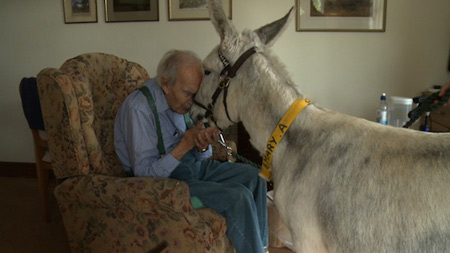
Sarah Vanagt, The Corridor, 2010.Courtesy of the Artist.
Sarah Vanagt, The Corridor
2010, 6'45”, colour, English spoken.
For 5 days Sarah Vanagt and cinematographer Annemarie Lean-Vercoe followed a donkey during its weekly visits to old people in nursing homes in South-England. From home to home, from room to room. Each time the donkey was welcomed warmly, with greetings, songs, strokes, childhood stories, poems, and laughter. Until the donkey entered the room of Norbert, a man who lost his ability to speak yet not his ability to touch. Even though Vanagt initially followed the donkey’s steps in search of reminiscences brought about by the animal’s mute presence, she came home with an altogether different film. While editing, the film became shorter and shorter, as if the words that had accompanied the donkey’s visits got in the way. What is left is perhaps a bas-relief disguised as a painting, disguised as a film.
---
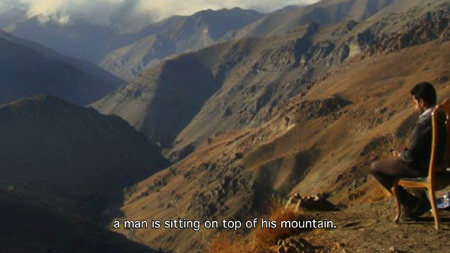
Meggy Rustamova, Waiting for the Secret, 2014.Courtesy of the Artist.
Meggy Rustamova, Waiting for the Secret
2014, 6', colour, Esperanto spoken, English subtitles.
Waiting for a Secret takes it starting point from a picture, revealing its secrets by zooming into the various details. Gradually, the picture becomes alive, raising issues such as isolation, linguistical confusion, pixelisation and the suggestion of movement within a still image.
---
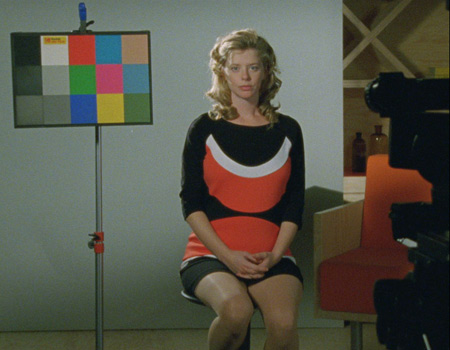
An van. Dienderen, LILI, 2015.Courtesy of the Artist.
An van. Dienderen, LILI
2015, 12', colour, English spoken.
In a TV studio a girl named Lili (played by Belgian actress Maaike Neuville) is asked to serve as a so-called China Girl. China Girls, used in cinema history since the 1920’s, are women with Caucasian skin who are filmed alongside a colour-chart in order to adjust the colours of the film. They have no dialogues to memorize or characters to impersonate. All they have to do, is have an impeccable white complexion. Their skin – white as porcelain – is used as a reference for the colour grading of camera and printing, ultimately excluding people of colour who do not conform to this implicit norm. Lili tells the story of one of these China Girls through archival material, found footage and documentary recordings, and questions the tradition of China Girls contextualized in a society, which, according to anthropologist Michael Taussig exemplifies chromo phobic uneasiness with colour.
About the program (pdf)
PRESS MATERIAL
CREDITS
Production: SCCA, Center for Contemporary Arts – Ljubljana / DIVA Station
In collaboration with: Argos, Centre for Art and Media, Slovenian Cinematheque
Curators: Vesna Bukovec (DIVA Station selection), Sofie Ruysseveldt and Andrea Cinel (Argos selection)
Artists (DIVA Station selection): Valerie Wolf Gang, Yuliya Molina, Noemi Veberič Levovnik, Neža Jurman (Nez Pez), Pila Rusjan, Andrea Knezović, Ana Čigon, Katarina Rešek, Urška Djukić, RÁTNEEK (Maja Prelog, Blaž Murn), Nika Autor, Ana Sluga, Vesna Bukovec
Artists (Argos selection): Jef Cornelis, Jacques-Louis Nyst, Eric Pauwels, Guillaume Bijl, Nicolas Provost, Wendy Morris, Sarah Vanagt, Meggy Rustamova, An van. Dienderen
Coordination: Dušan Dovč, Luka Polutnik, Neža Grum
Web support: Vesna Bukovec
Supported by: City of Ljubljana – Department for Culture; Republic of Slovenia Public Fund for Cultural Activities; Slovenian Film Centre; Embassy of Belgium – Delegation of Flanders

|

